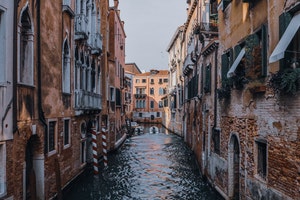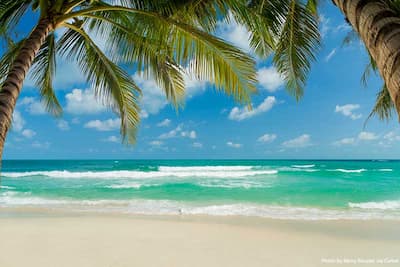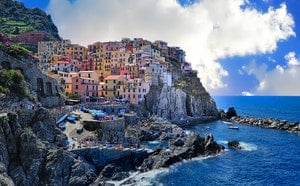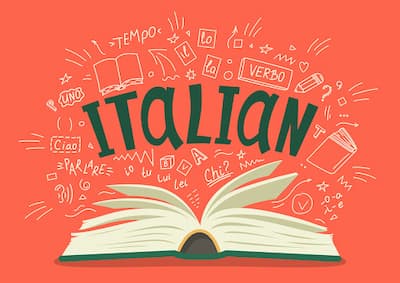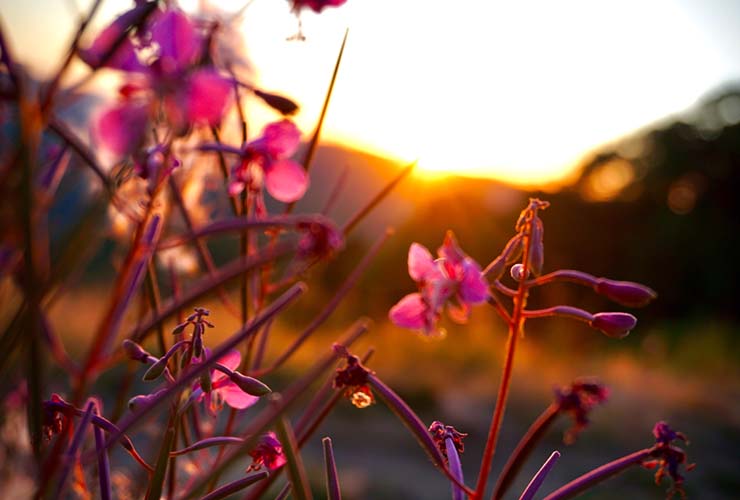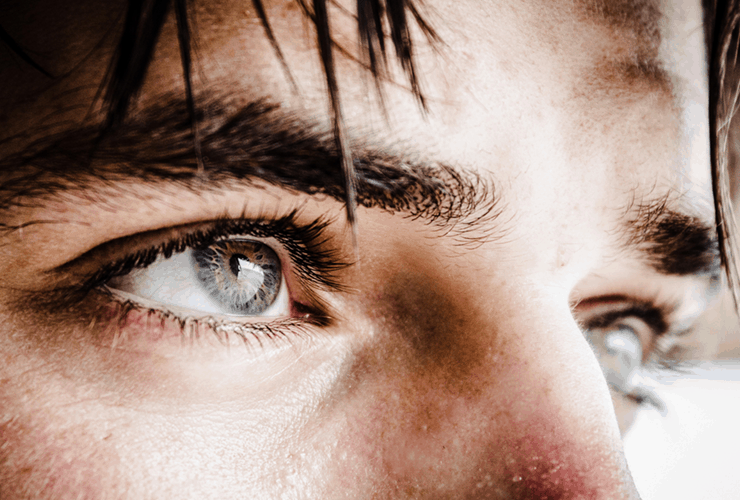One of the first terms everyone wants to learn how to say in Italian is beautiful, but unlike other words which have just one precise translation, this particular word can be expressed in multiple ways.
In this article, we’ve listed six of the most common terms for beautiful you’ll come across while learning Italian. If you can think of any others that we’ve missed, feel free to leave us a comment below! 🙂
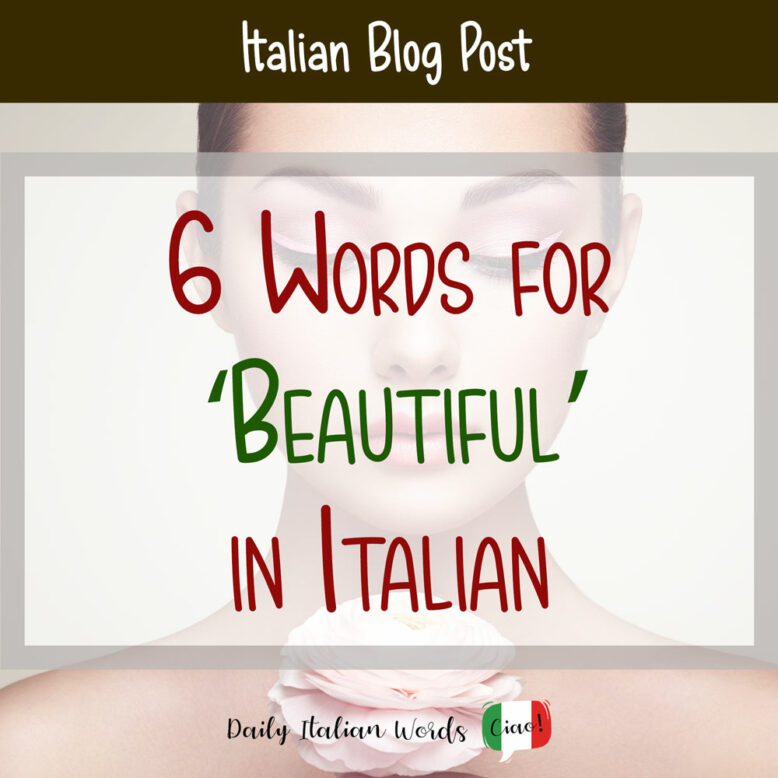
Learn with our video

1. Bello
Perhaps the most straightforward and recognised translation for beautiful in Italian is bello (masculine). Even those who aren’t learning Italian have probably encountered the cliché phrase Ciao bello! / Ciao bella! (Hello beautiful!) at some point in TV shows or movies about Italy.
As is the case with many adjectives, the ending of bello changes according to the gender and number of the noun it describes. When it comes after the noun, it behaves like a normal adjective:
- bello = masculine singular (bambino bello = beautiful boy)
- bella = feminine singular (bambina bella = beautiful girl)
- belli = masculine plural (bambini belli = beautiful boys)
- belle = feminine plural (bambine belle = beautiful girls)
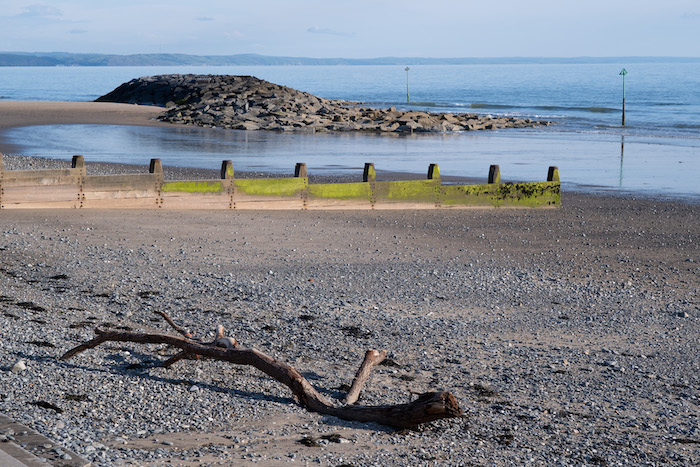
When it comes before the noun however, it follows the rules of the definite articles (il, lo, la, i, gli, le and l’):
- bel = masculine singular (bel bambino = beautiful boy)
- bello = masculine singular in front of nouns starting with s + consonant, z, y, x, ps, pn, pt or gn (bello sguardo = beautiful gaze)
- bella = feminine singular (bella bambina = beautiful girl)
- bell’ = in front of singular nouns starting with a vowel (bell’albero)
- bei = masculine plural (bei bambini = beautiful boys)
- begli = masculine plural in front of nouns starting with a s + consonant, z, y, x, ps, pn, pt or gn (begli sguardi = beautiful gazes)
- belle = feminine plural (belle bambine = beautiful girls)
Non mi stuferò mai di questa bella vista.
I’ll never get tired of this beautiful view.
Keep in mind that bello / bella can be translated in many other ways besides beautiful including handsome, nice, fair, good, quite and virtuous.

2. Bellissimo
If you want to be even more emphatic, you can add the suffix -issimo (masculine) to the end of bello to form the absolute superlative bellissimo. The literal English translation would be very beautiful or extremely beautiful but beautiful on its own can often suffice.
The feminine and plural forms are as follows: bellissima (feminine), bellissimi (masculine plural) and bellissime (feminine plural).
C’era una volta una bellissima principessa che viveva in un mondo incantato.
Once upon a time there was a princess who lived in an enchanted world.

3. Molto bello
Another way of saying bellissimo is molto bello, which is formed by adding the adverb molto (very) in front of the adjective. Whereas bello and bellissimo can either precede or follow the noun they describe, molto bello must follow it as in the following example.
Lei ha un viso molto bello e un sorriso ammaliante.
She has a very beautiful face and a bewitching smile.

4. Stupendo
In English, we don’t tend to use the word stupendous very often, but in Italian, it is a very common adjective that often translates as beautiful.
Stupendo is the masculine form, whereas stupenda is the feminine. Their respective plural forms are stupendi and stupende.
Sofia Loren è una donna stupenda e una grande attrice!
Sofia Loren is a beautiful woman and a great actress!
Some other possible translations for stupendo include wonderful, stunning and splendid.

5. Meraviglioso
Marvellous is another one of those words that doesn’t crop up in English all that often but its Italian equivalent, meraviglioso, is very much alive and well, and works as a very plausible translation for beautiful.
As with the other adjectives on this list, simply change the last letter to a, i, or e to create the feminine and plural forms.
Che tramonto meraviglioso che abbiamo visto!
What a beautiful sunset we saw!

It too can be translated using other adjectives such as wonderful, magnificent, astonishing or extraordinary.
6. Magnifico
Our final synonym for beautiful in Italian is magnifico which, as you might have guessed, means magnificent. Out of all the words listed here, I would say this one translates as beautiful the least often, but it is still a possibility.
Magnifica is the feminine form, magnifici the masculine plural and magnifiche the feminine plural.
Once again, you can change the last letter to create the feminine and plural forms.
Ho visto un magnifico gatto rosso con gli occhi verdi.
I saw a beautiful orange cat with green eyes.
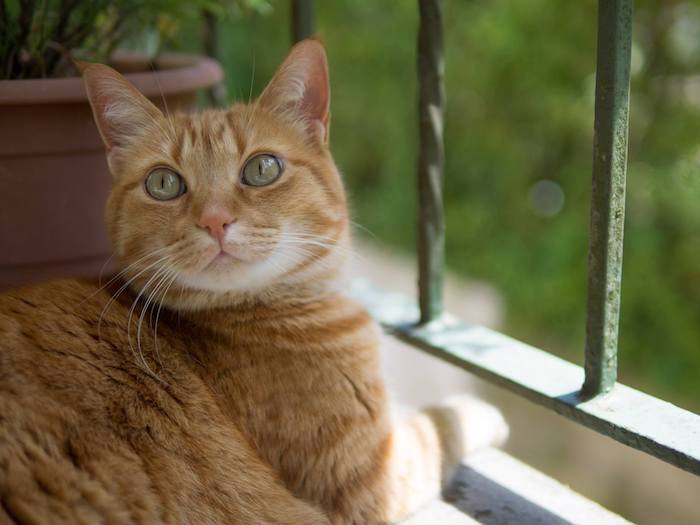
‘Beautiful’ Bonus Expressions!
If you want to learn some additional words and expressions containing bello and bellissimo (which tend to be the default translations for beautiful), we’ve got you covered!
You are beautiful.
You are very beautiful.
You are so beautiful.
How beautiful you are.
Tu sei bello(a).
Tu sei bellissimo(a) / molto bello(a).
Tu sei così bello(a).
Come sei bello(a).
It’s beautiful.
Life is beautiful!
È bello(a).
La vita è bella!
Hi / Bye beautiful!
Ciao bello / bella!
My beautiful love.
Il mio bellissimo amore.
This article is also available in video format on our YouTube channel. The audio version can be found on Podbean, Google Podcast, Apple Podcast and Spotify.
How to say beautiful in Italian? A teacher of Italian as a second language shows how to say ‘bello’ the right way, any time you need it!
One of the first Italian word people learn is ‘bello’ = beautiful.
It is a very useful word in any language but it is a particularly useful one to know in Italian since it is widely used in very many different contexts.
The fact that Italy is also called ‘Il Bel Paese’ (The beautiful country) says it all!
Bello means beautiful in Italian however, you find this word declined differently depending on the sentence.
Also, it is used in many idioms and colloquial expressions that may leave you confused.
This is my quick guide to say beautiful in Italian!
Top tip! If you want to learn a few Italian phrases and words for your travel, you can find over 100 of them in this article with the most useful Italian phrases for tourists.
How to say beautiful in Italian: bello, bella, belli, belle
The Italian word for beautiful is bello.
However, Italian uses different forms of the word ‘bello= beautiful’ depending on the gender and quantity of the thing you are talking about (yes, in Italian everything is either masculine or feminine, even objects!).
To use the word beautiful the right way, this is what you need to know.
| Singular | Plural | |
| Masculine | Bello, bel, bell’ | Belli, Begli, Bei |
| Feminine | Bella, bell’ | Belle, bell’ |
Bello – masculine, singular, you say ‘bello’ about a man/male or also a place or anything the Italian language identifies as masculine.
For instance:
- Questo quadro e’ bello: this painting is beautiful
- Quel ragazzo e’ bello: that guy is handsome
- Che bello! How beautiful!
If you want to say that any of these things is very beautiful you simply add ‘molto’: molto bello! Very beautiful!
Bello can be used after the noun it refers to, which is the norm with most Italian adjectives, or you can use it in front.
When used in front, it sometimes changed its form, for example:
- Un bel paesaggio – a beautiful landscape
- Un bell’albergo – a beautiful hotel
- Che bel ragazzo: what a handsome boy
- Un bel piatto di pasta: a beautiful plate of pasta
- Un bel giro in gondola: a beautiful gondola tour
You use bel for singular, masculine nouns starting with consonant
You use bell’ with singular, masculine names starting with vowel.
In front of words starting with sp, st, sg and sc, you keep bello: un bello spettacolo – a beautiful show.
Bella – bella is feminine of bello and it is used before or after singular, feminine nouns.
Some examples are:
- Una bella ragazza – a beautiful girl
- Che bella signora – what a beautiful lady
- Una bella citta’ – a beautiful city
- Come sei bella! or Quanto sei bella! you are so beautiful!
- Una bella vacanza – a beautiful holiday
- La Toscana e’ molto bella – Tuscany is very beautiful
- Che bella vista – what a beautiful view
- La vita e’ bella – life is beautiful
Like bello, bella can get shortened in front of certain words for instance instead of saying una bella isola you say una bell’isola: Capri e’ una bell’isola con mare azzurrissimo – Capri is a beautiful island with very blue sea.
The plural of bella is belle: La Sicilia e la Sardegna sono delle belle isole – Sicily and Sardinia are beautiful islands.
Need to know: Ciao bella!
Literally, ciao bella means ‘Hello beautiful’ and you may have heard in in movies with guys shouting ‘ciao bella’ to attractive girls passing by.
However, there is much more to the expression that this use (also, do not do it, it’s rude!).
Ciao bella is nowadays very popular between friends, especially girlfriends.
When you meet up or on the phone, it is very normal to say ciao bella as a term of endearment, like saying ‘hi darling / my dear’
Belli – belli is masculine plural and you use it in expressions such as I quadri di Caravaggio sono belli e famosi.
Like bello, in its full form belli usually comes after the noun.
If it precedes it, it may change form for instance in front of vowel a good example can be
- Che begli occhi marroni che hai – what beautiful brown eyes you have
- Che bei bambini! What beautiful children!
- Venezia ha dei begli alberghi – Venice has beautiful hotels
Piu’ bello, bellissimo: very beautiful stunning
Piu’ means plus in Italian so when you add it to bello you get ‘more beautiful’.
This is used when comparing to things and to say that one is more beautiful than the other.
If you want to say that something is very beautiful, you use bellissimo – or bellissima (she) bellissime (female plural), bellissimi (masculine plural)
The full expression would me
- Questo albergo e’ piu’ bello di quesllo di ieri – this hotels is more beautiful than the one yesterday
- Bellissimo! Very beautiful!
- Bellissima! Very beautiful (female)
- Una bellissima ragazza: a very beautiful girls
- Sei bellissima: you are very beautiful (to a girl)
- Hai dei figli bellissimi you have very beautiful kids
- Gli uomini italiani sono bellissimi: Italian men are very handsome
- Hai degli occhi bellissimi: You have very beautiful eyes
- Sei la donna piu’ bella del mondo: you are the most beautiful woman in the world
More examples on the way, you may want to pin this for easy access!

Other ways to say beautiful in Italian
Carino/a – pretty, pleasant in appearance or manner. This can be used for people or a place
- Un ragazzo carino: a nice boy
- Un paese carino con un bel museo – a nice village with a beautiful museum
- I proprietari sono molto carini: the owners (hosts) are very nice
- Una ragazza carina e gentile: a nice and kind girl
Attraente – attractive
- Un ragazzo attraente – an attractive guy
- Una ragazza attraente – an attractive girl
Di bell’aspetto – of good appearance, beautiful, good looking (slightly old fashioned)
Un signore di bell’aspetto e sempre bel vestito: a good looking man always well dressed
Affascinante – fascinating, alluring, both a person or a place.
Venezia e’ affascinante, piena di segreti – Venice is fascinating, full of secrets
Un uomo affascinante e misterioso – a fascinating and mysterious gentleman
Una donna affascinante e colta – a fascinating, educated woman
Delizioso – delightful
This is usually used for something pretty, dainty or cute, such a child or a someone exceptionally pleasant.
Una persona deliziosa (a lovely person): a person with a lot of attention and nice thoughts for others.
Incantevole – enchanting
Una serata incantevole – an enchanting evening
Un paesaggio incantevole, da cartolina – a delightful landscape, picture perfect
Da cartolina is also a good one to know, you get two in one with this last example!
Stupendo – stunning
Roma e’ stupenda – Rome is stunning
Un viaggio stupendo – a wonderful trip
Magnifico – magnificent
Just like in English, this is slightly lesser used than other expressions on this page but still correct and poignant when used correctly.
Un pasto magnifico – a magnificent meal
Lorenzo il Magnifico (name) – Lorenzo the Magnificent/Great
Splendido -splendid, wonderful
Un posto splendido – a wonderful place
Straordinario – extraordinary
Venezia e’ straordinaria – Venice is extraordinary
Un servizio straordinario – exceptional service (for instance in a hotel)
Favoloso – fabulous
Un posto favoloso – a fabulous place
Una colazione favolosa – a fabulous breakfast
Spettacolare / Uno spettacolo (informal) – spectacular, lit. ‘a show’
La Costiera Amalfitana e’ spettacolare – The Amalfi Coast is spectacular / very beautiful
Questa cena e’ uno spettacolo – this dinner is wonderful
Songs to learn the use of beautiful in Italian you can find on Youtube
- Bella – by Jovanotti
- O bella ciao – partisan song, listen to the version by Giorgio Gaber
- Amore Bello – by Claudio Baglioni
- Sei bellissima – Loredana Berte’
I know learning Italian is not easy, I hope these examples helped you figure out how to say beautiful in Italia!
How to Say Beautiful in Italian
Bello
The most popular and straightforward way to say beautiful in Italian is ‘bello.’
You may have heard the phrase ‘Ciao bello,’ which means ‘hello, beautiful’, in many TV shows.
It’s mainly used as an adjective, and it can be adapted to suit any noun in the Italian language.
‘Bello’ is the masculine variation of the word because of its ending in ‘o.’ That changes, of course, depending on the noun it’s describing.
- bello = masculine singular
- bella = feminine singular
bambina bella
beautiful girl
- belli = masculine plural
bambini belli
beautiful boys
- belle = feminine plural
bambine belle
beautiful girls

When it stands before the noun, it follows the same rule as definitive articles.
This only applies to the adjective bello. Indeed, beauty has a special place in the Italian language!
- bel = masculine singular
bel bambino
beautiful boy
- bello = masculine singular
bello sguardo
beautiful gaze
- bella = feminine singular
bella bambina
beautiful girl
- bell’ = in front of singular nouns starting with a vowel
- bei = masculine plural
bei bambini
beautiful boys
- begli = masculine plural
begli anni
beautiful years
- belle = feminine plural
belle bambine
beautiful girls
Keep in mind that bello / bella can be translated in many other ways besides being beautiful, including handsome, nice, fair, good, and virtuous.
So, the most common word for beautiful in Italian is ‘bello’, but of course, it’s not the only one.

Più bello
Moving on, bello can be modified depending on the degree of intensity: we’ve already seen its basic form, and now we’ll look at comparative and superlative forms.
In Italian, we use the formula: “X è più bello di Y,” which directly translates to “X is more beautiful than Y” when comparing two items, situations, or people, and especially when using the adjective.
Secondo te, i girasoli sono più belli delle rose?
What do you think? Are sunflowers more beautiful than roses?
You can construct a comparative sentence simply by adding the particle “più.”
As you can see, this process works with all the normal adjectives, so keep it in mind, it could come in handy on other occasions!
Learn more about comparatives here.
Bellissimo
‘Bellissimo’ means ‘very beautiful,’ or ‘extremely beautiful.’
It’s a very emphatic way of expressing your appreciation towards something or someone, and it behaves like ‘bello’ in terms of grammar.
The feminine and plural forms are as follows: bellissima (feminine singular), bellissimi (masculine plural), and bellissime (feminine plural).
Quasi tutte le fiabe hanno una bellissima principessa che vive in un mondo incantato.
Almost all fairy tales have a beautiful princess who lives in an enchanted world.
Here’s a song that has the word bellissima in it: “Sei bellissima“, by Loredana Bertè.
Try listening to it to practice your Italian and to see if you like it:
Molto bello
‘Molto bello’ and ‘bellissimo’ are very similar.
They both mean ‘very beautiful,’ but ‘molto bello’ is formed by adding the adverb ‘molto’ (very) in front of the adjective ‘bello.’
Unlike ‘bello’ or ‘bellissimo,’ ‘molto bello’ can be only used after the noun.
Lei ha un viso molto bello e un sorriso ammaliante.
She has a very beautiful face and a bewitching smile.
Stupendo
Even though in English we don’t use this word very often, in Italy, it is very popular.
It translates to ‘stupendous’ which means ‘incredibly impressive’ o ‘gorgeous’.
Stupdendo is the masculine form, whereas stupenda is feminine.
Their respective plural forms are stupendi and stupende.
Sofia Loren è una donna stupenda e una grande attrice!
Sofia Loren is a gorgeous woman and a great actress!
Meraviglioso
If you want to tell someone how extraordinary they are, you can use ‘meraviglioso.’
It literally means wonderful. In fact, ‘meraviglia’ means wonder.
Even if you wouldn’t use this word in English often, in Italian, it’s quite common.
‘Meraviglioso’ is the masculine form, but you can use ‘meravigliosa’ for feminine, or ‘meravigliosi’ and ‘meravigliose’ for plural.
Che tramonto meraviglioso che abbiamo visto!
What a wonderful sunset we saw!
Magnifico
If you want to tell someone that they are completely magnificent, you can use the word ‘magnifico.’
This one doesn’t translate as beautiful in its regular way, but it’s still a very popular way of expressing your feelings.
As with every other on this list, ‘magnifico’ is the masculine form, but if you change the last letter and become ‘magnifica,’ ‘magnifiche,’ or ‘magnifici.’
Questo posto è magnifico!
This place is magnificent!
Bellissimo: Italian superlative
In general, people use superlatives in order to describe a person or object that’s incredibly beautiful or the most beautiful (or any other adjective instead of beautiful).
In English, you create the superlative by adding the word most before the adjective (e.g.: the most incredible) or by adding -est at the end of the adjective if it’s short (e.g.: the nicest, the cutest).
In Italian, you can add the suffix ‘-issima’ or ‘-issimo’ to emphasize the adjective and make the superlative.
In the case of ‘bellissimo,’ you simply add the suffix -issimo at the end of the word ‘bello,’ after removing the last vowel.

How to Learn Languages Fast
More Italian expressions for “Beautiful”
As anticipated before, now we will see more words to say beautiful in Italian.
Remember that while all of these synonyms may have slightly different meanings and nuances, they are all commonly used as substitutes for bello in various situations.
Attraente
Attraente usually refers to a person, meaning that he or she is not only pleasing to the eye but has to them a sensual allure.
In fact, you may have heard the term
è molto bello, ma non è per niente attraente
he/she is beautiful, but not at all attractive,
which implies that their beauty is chilly and distant.
Affascinante
Affascinante is a term that is related to attraente and is used to describe a good-looking individual who also has a lot of charm and a charming personality.
Trovava il mago alquanto affascinante.
She thought the magician quite charming.
However, other adjectives that are commonly used to describe people (but also situations, items, and locations) are: delizioso, incantevole, meraviglioso and stupendo.
Fantastico, Splendido And Straordinario
These are frequently used in advertising and TV language to further emphasize the products or messages being promoted.
Here are some examples to help you understand how to use these adjectives:
In uscita il fantastico nuovo film di Gabriele Muccino.
Coming soon the new breathtaking movie by Gabriele Muccino.
Non lasciatevi sfuggire questa offerta straordinaria!
Don’t miss out on this extraordinary offer!
Favoloso
This adjective comes from the word “favola”, which literally translates into “fairy-tale”, so when you refer to someone or something as favoloso, you’re actually saying that they are fabulous!
Adoro il tuo nuovo taglio di capelli, è favoloso!
I love your new haircut, it’s fabulous!
Incredibile
Incredibile is a word that sounds similar to favoloso and means “unbelievable.”
It is used to describe something or someone as being unbelievably, incredibly beautiful, gorgeous, or fantastic in the sense of beauty.
Lo spettacolo è stato incredibile!
The show was awesome!
More beautiful expressions in the Italian language
It’s important to know how to express yourself. How to say beautiful in Italian can help you fully describe what you feel about something or someone, like the most beautiful architecture you’ve seen.
We’ve put together a list of six of the most popular terms for beautiful that you’ll come across while learning Italian.
If you can think of any others that we’ve missed, please leave us a comment below!
Now that you know how to say beautiful in Italian, check out these posts with more beautiful expressions:
- Thank you in Italian
- I love you in Italian
- Happy birthday in Italian
- Cheers in Italian
Still translating in your head? Wanna speak Italian for real? Check out Stefano’s courses to think directly in Italian and become fluent fast!
Beauty is a concept that has been explored in art, literature, and philosophy for centuries. It is a quality that is difficult to define, but easy to recognize. In the Italian language, the word for beautiful is bello (masculine) or bella (feminine). In this article, we will delve into the meaning and usage of this important Italian word.
The word bello is derived from the Latin bellus, which means handsome. Over time, the meaning of the word expanded to encompass a broader range of beauty beyond just physical appearance. In Italian, the word bello is used to describe anything that is pleasing to the senses or the mind. This can include a beautiful sunset, a delicious meal, a piece of art, or a person’s character.
The feminine form of the word, bella, is used to describe feminine nouns. For example, a beautiful woman would be described as una donna bella, while a beautiful flower would be un fiore bello. The word bella is also used as a term of endearment, particularly between couples. For example, a man might refer to his girlfriend as bella as a way of expressing his affection for her.
One interesting aspect of the Italian language is that adjectives must agree in gender and number with the noun they modify. This means that if the noun is feminine, the adjective must be feminine as well. Similarly, if the noun is plural, the adjective must be plural as well. For example, le ragazze belle would translate to the beautiful girls, while i ragazzi belli would translate to the handsome boys.
In addition to the word bello, there are several other Italian words that can be used to describe beauty. For example, splendido can be used to describe something that is splendid or magnificent, while incantevole can be used to describe something that is enchanting or captivating. Meraviglioso is another word that can be used to describe something that is marvelous or wonderful.
Overall, the Italian language offers a rich vocabulary for describing beauty. The word bello is a versatile and important word that is used to describe a wide range of beautiful things. Whether you are admiring the beauty of a work of art, a natural landscape, or a person’s character, the word bello is a powerful tool for expressing your appreciation for the world around you.
Beautiful in Italian – How do I say it?
Being Italy a country rich in beauty and culture, many things can be described as beautiful… But how do I say Beautiful in Italian?
In this article, we’ll see how you can say it in various way… Let’s see them!
The most common word to say beautiful in Italian is “bello”.
Bello is one of the most used adjectives to say beautiful in Italian.
It describes people, animals and things that you consider pleasant to the eye, more than pretty or nice, very enjoyable and it translates directly with beautiful.
Here you will not only learn how to use the adjective bello, but also many ways to say beautiful in Italian, that will bring your vocabulary to the next level and step up your game!
Ways to say beautiful in Italian
- bello (bellissimo, molto bello)
- attraente
- affascinante
- delizioso
- incantevole
- stupendo
- fantastico
- magnifico
- splendido
- straordinario
- favoloso
- incredibile
- carino
- un capolavoro
- uno spettacolo
- spettacolare
Now that you have a list of the most common adjectives to say beautiful in Italian, let’s see how to use them correctly.
Bello
First of all, bello is is the most common way to say beautiful in Italian. It is an adjective: this means that it changes depending on the number(singular or plural) and gender(masculine or feminine) of the noun it refers to.
Take a look at this table:
| Singular | Plural | |
| Masculine | Bello/ bel /bell’ | Bei/ begli/belli |
| Feminine | Bella/bell’ | Belle |
Contrary to English, in Italian adjectives usually come after the noun.
- un ragazzo bello
- una donna bella
- i bambini belli
- le persone belle
Starting with the basis, we have bello, which is singular and masculine.
For example:
Un ragazzo bello – a beautiful boy
Sei proprio bello! – you are very handsome!
It may be used as a greeting between friends or family:
Ciao bello! – Hi handsome! or Hi bro!
Bello after a noun
Usually, in Italian, the adjective comes after the noun it refers to.
However, In the case of bello, it can come before or after a noun.
If placed before, depending on the noun, it slightly changes, to best accommodate the pronunciation and the sound of the phrase. It follows the same rule we use with definite articles, like so:
Bello
You use bello in front of a noun that starts with s + consonant, z, y, ps, pn, x or gn.
For example:
bello scenario – beautiful scenery
Bel
Bello becomes bel (singular masculine)
For example:
bel ragazzo, bel cane – a beautiful boy, a beautiful dog
Bell’
Bell’ is used in front of a singular noun starting with a vowel, whether it is masculine or feminine.
For example:
bell’artista – a beautiful artist
Bella
Bella is used with feminine singular nouns or as an informal way of greeting between female friends:
For example:
Una ragazza bella – a beautiful girl
Ciao bella! – Hi beautiful!
Bell’
When placed in front of a noun, it stays the same, except in front of words starting with a vowel, where it drops the final “a”:
For example:
Che bella giornata – what a beautiful day
Una bell’isola – a beautiful island
Belli
It generally accompanies masculine plural nouns. It can be heard amongst youngsters as a form of greeting, similar to “bros”:
For example:
dei ragazzi belli – some beautiful boys
Ehi belli! – Hi there bros!
Begli
Before a noun it changes, following the definite articles rule, becoming:
Begli in front of a noun that starts with s + consonant, z, y, ps, pn, x or gn.
For example:
begli scenari – beautiful sceneries
Bei
Bei (plural masculine) in all the other cases.
For example:
bei ragazzi, bei cani – some beautiful boys, some beautiful dogs
Belle
This is the feminine plural form of “bello”, it doesn’t change when placed in front of the noun it refers to:
For example:
Delle ragazze belle – some beautiful girls
Delle belle amiche – some beautiful friends
Più bello
Moving on, bello can be modified according to the degree of intensity: we saw its basic form, now we will deal with the comparative and superlative.
When comparing two things, situations or persons, and, in particular with the adjective, in Italian we use the formula:
“X è più bello di Y”, which literally translates into “X is more beautiful than Y”.
So, just by adding the particle “più”, you can build a comparative phrase. As you can see, this process works with all the normal adjectives, so keep it in mind, it could come in handy in other occasions!
Bellissimo and Molto bello
| Singular | Plural | |
| Masculine | Bellissimo | Bellissimi |
| Feminine | Bellissima | Bellissime |
Next, we can say very beautiful in Italian with the the superlative form of bello which is bellissimo: to construct the absolute superlative, you just need to add the suffix –issimo and you’re done! It translated into “very/extremely beautiful” in English. Of course, don’t forget that, being an adjective, it still needs to be adjusted to the noun that it accompanies:
È una canzone bellissima!
It’s a beautiful song
However, similar to bellissimo, we have molto bello, which expresses the same meaning by adding the adverb molto (very) in front of the adjective. Bear in mind that this formula must always follow the noun it refers to, contrary to what we said before about the use of bello and bellissimo.
For example:
Oggi è una giornata molto bella.
Oggi è una bella giornata.
These phrases both translate as “Today it is a beautiful day”, but, please, take note of the position of the adjective: can you see the difference? While bello can go either before or after the noun, molto bello can only follow it!
More ways to say Beautiful in Italian
As anticipated before, now we will see more ways to say beautiful in Italian. Remember that all these synonyms might have slightly different meanings and nuances between them, but they are generally used as substitutes of bello in different contexts.
Attraente
This usually refers to a person, meaning that he or she is not only aesthetically pleasing, but has to them a sensual allure. As a matter of fact, often you could hear the phrase:
“è molto bello, ma non è per niente attraente” – he/she is beautiful but not at all attractive
meaning that their beauty is somehow cold and distant.
Affascinante
It is similar to attraente, so it used to describe a good-looking person that also possesses quite the charm, a charismatic character.
For example:
Trovava il mago alquanto affascinante. – She thought the magician quite charming.
However, other adjectives that are frequently used to describe people (but also situations, things and places) are: delizioso, incantevole, meraviglioso and stupendo.
Delizioso and incantevole
They both denote a certain elegance and awe towards the addressee; they are usually referred to girls or women, their attire and appearance. Even an event or a situation can be described using these adjectives. Delizioso is often used referring to food.
For example:
Wow, quel vestito è delizioso su di te! – Wow, that dress looks stunning on you!
Che serata incantevole! – What a lovely night!
Questo dolce è delizioso! – This dessert is delicious!
Stupendo
I can’t help but sing this song in my head when I hear the word stupendo:
It is translated as gorgeous, wonderful, stupendous, marvelous, splendid.
For example:
Grazie per lo stupendo regalo! – Thank you so much for the wonderful gift!
Fantastico, magnifico, splendido and straordinario
These are often used in advertisement and TV language, to emphasize the products or concepts advertised even more. However, employed with the same hyperbolic function we have fantastico, magnifico, splendido and straordinario.
Here you will find some examples, to better understand how to use these adjectives:
In uscita il fantastico nuovo film di Gabriele Muccino. – Coming soon the new breathtaking movie by Gabriele Muccino.
La vista da quassù è meravigliosa. – The view from here is wonderful.
Visitate la magnifica Costiera Amalfitana! – Come visit the beautiful Amalfi Coast!
Non lasciatevi sfuggire questa offerta straordinaria! – Don’t miss out on this extraordinary offer!
Favoloso
This adjective comes from the word “favola”, which directly translates into “fairy-tale”, so when you refer to someone or something as favoloso, you’re actually saying that they are fabulous!
For example:
Adoro il tuo nuovo taglio di capelli, è favoloso! – I love your new haircut, it’s fabulous!
Incredibile
Similar to favoloso, there’s incredibile, which literally means “unbelievable”. In the context of beauty, it is used to say that something or someone it’s unbelievably, incredibly beautiful, gorgeous or amazing.
For example:
Lo spettacolo è stato incredibile! – The show was awesome!
Laura è incredibile! – Laura is amazing!
Carino
Carino is another term frequently used to indicate that something or someone is cute or nice, with a lesser degree of beauty compared to bello. However, it can also signify that someone is being kind to you or displaying some polite and gentle manners, which in Italian can be called “carinerie”.
For example:
A: Ti piace Marco? – Do you fancy Marco?
B: È carino, ma non è il mio tipo. – He is cute, but he’s not my type.
A: Che cane carino! – What a cute dog!
B: Si chiama Dug ed è un carlino. – It’s Dug and it’s a pug
Un capolavoro
You may find this expression referred to a piece of art, in general. It directly translates with “a masterpiece” and it is used with the same meaning, so when something, or someone, is just perfect and outstanding, it is a capolavoro!
For example:
Quel dipinto è un capolavoro! – That painting is a masterpiece!
Sei un capolavoro! – You are beautiful/handsome!
Uno spettacolo or spettacolare
If someone or something is very beautiful you can refer to it as uno spettacolo (”a show”), or describe it as spettacolare (spectacular).
For example:
Roma è spettacolare! – Rome is spectacular!
Con quel vestito sei uno spettacolo! – You look spectacular with that dress on!
Conclusion
As you can see, I used different variations of the word beautiful, according to the context. With time and practice, you will learn which adjective works best with which nouns, paying attention to the nuances that each one of them beholds.
You just leaned all valid alternatives to the word beautiful in Italian. I know, there is a lot to memorize, but little by little it will come natural and easier to use them. Practice makes perfect, so go out there and start making nice compliments to Italians!
By: Lucia Aiello
Lucia Aiello is one of the co-founders of LearnItalianGo. Born and raised in Italy, she is a passionate Italian teacher and language enthusiast.


